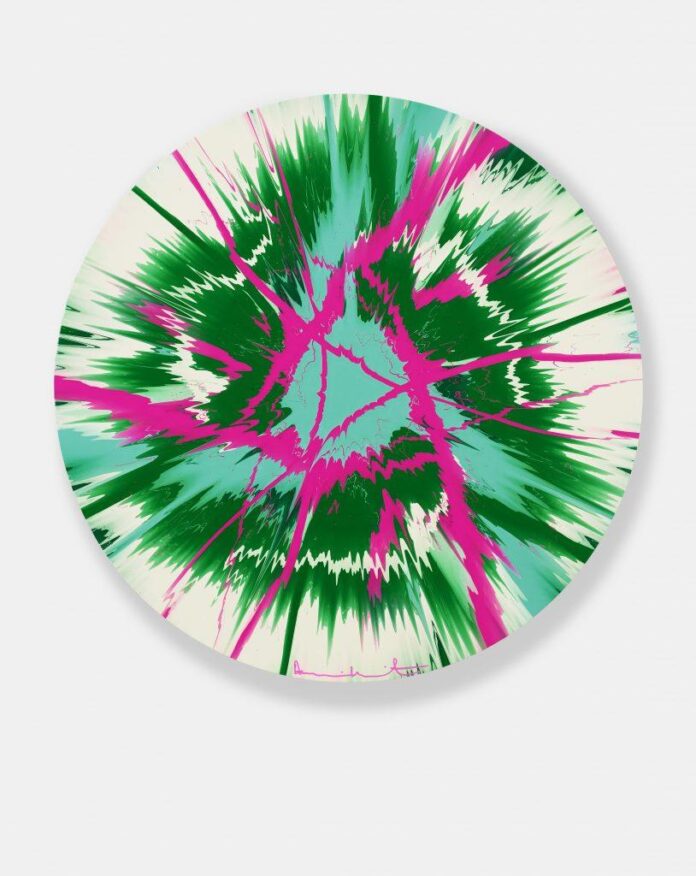There’s a scene in the classic Woody Allen film in which a surly artist lectures a nouveau riche client that he doesn’t sell paintings “by the yard” or “to blend in with the sofa.” Well, Damien Hirst does.
Enter , Hirst’s latest foray into the realm of NFTs that riffs off his celebrated from the 1990s, in which the British artist dribbled paint from on top of a ladder onto rotating canvases. Vivid color endures, but the new works are flat and precise, with the serendipity of motion and gravity handed over to a generative algorithm. The reasoning behind series’ name is self-evident, Hirst announced on Twitter.

A work generated by by Damien Hirst. Photo: Prudence Cuming Associates Ltd.
Would-be collectors are directed to a dashboard on HENI, the arts and technology company that’s currently serving as Hirst’s primary digital collaborator, where they can generate their own painting. The menu allows users to select up to 12 colors, one of 25 spin styles, blurring, and the canvas shape (square or round). Those more inclined to relinquish creative control to Hirst’s machine can randomize the entire process. And why not? They’re all beautiful.
Once users have generated a painting, they can have the work produced as a physical piece, an NFT, or both. Physical works come in four sizes ranging from 24 cm to 100 cm in diameter and have Hirst’s signature scrawled in paint pen. Canvases range in price from $1,500 to $6,000, and an NFT minted on the Ethereum blockchain costs $2,000.

A work generated by by Damien Hirst. Photo: Prudence Cuming Associates Ltd.
“I have always believed that everything done well is art and there are no boundaries,” Hirst said in a statement. “For me, and the are about that. No boundaries. Art that makes you go, ‘wow!’ And you can get lost in it.”
With Hirst is also showing an appetite to capitalize on the latest buzzwords of a tech-fuelled art moment (machine learning, generative art, NFTs).
Machine learning was used to produce the sample color names—indigo blue is Blueberry Brûlée, purple is Ego, forest green is Mountain Man—and to produce long, nonsensical artwork titles. The algorithm inserts descriptives between the words “Beautiful” and “Painting” to produce titles such as “Beautiful Very Undigested Painting,” “Beautiful Ennobled Painting,” or “Beautiful Dear And Welcome Implosion Painting.”

Damien Hirst with . Photo: Prudence Cuming Associates Ltd.
“I wanted to do something that’s purely generative,” the artist added. “Without using paint, canvas, or pencils and paper, I was excited to see if we could make something that generated good-looking that weren’t in the real world.”

























